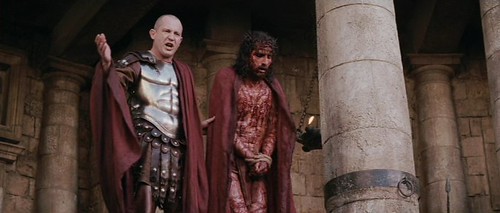 Bertrand Russell in his famous essay, 'Why I am Not a Christian' contends there are two beliefs that are essential for those who call themselves Christian. He does not appear to have asked the churches what they think constitute sufficient beliefs, which I would have thought to be a fairly minimal requirement. He also does not seem to understand that belief and faith are not the same thing. However, we will leave that thought to one side.
Bertrand Russell in his famous essay, 'Why I am Not a Christian' contends there are two beliefs that are essential for those who call themselves Christian. He does not appear to have asked the churches what they think constitute sufficient beliefs, which I would have thought to be a fairly minimal requirement. He also does not seem to understand that belief and faith are not the same thing. However, we will leave that thought to one side.
Apparently Christians are supposed to believe in God and immortality. I will leave these to my next post. The second belief is 'Christ, if not divine, was at least the best and wisest of men'.
First, throughout the essay Russell refers to Jesus as Christ. Christ was not his name; during his lifetime he was known as Jesus of Nazareth. Christ was an honorific title given to him by the early Christians. He was a real person, in a real place at a real time. This is called incarnation. Christians believe that God lived as a real human being in a real time and place.
It seems incarnation has in the view of many, although not all, Christians removed the ban on graven images (or perhaps on all images as the Orthodox Churches would argue their icons are not graven). The logic of this is that if God were human we cannot be mistaken in visualising him as a human being. This seems to help a lot of people, although it's not really my cup of tea. Methodism uses such images rarely.
 The problem for me is largely the way in which these images are presented. Many seem to be sentimental depictions of an idealised man. He is often seen with children or small animals as we are told he was gentle and mild and meek. Worse he is too often a fair haired Caucasian man. It is interesting that every culture seems to depict Jesus as one of their kind. If you see these images together, it can be very powerful. However, there is a tendency for the images from dominant cultures to predominate.
The problem for me is largely the way in which these images are presented. Many seem to be sentimental depictions of an idealised man. He is often seen with children or small animals as we are told he was gentle and mild and meek. Worse he is too often a fair haired Caucasian man. It is interesting that every culture seems to depict Jesus as one of their kind. If you see these images together, it can be very powerful. However, there is a tendency for the images from dominant cultures to predominate.
Russell spends a lot of time demonstrating Jesus (or Christ as he would have it) was not the best and wisest of men. He overlooks one fact. Jesus was murdered. He was murdered by the political and religious authorities of his day. Just like millions of people since have been murdered by political and religious authorities. They have also been enslaved, exploited and generally suppressed and dominated.
Why don't fundamentalist Christians walk around their communities wearing not crosses, but images of lethal injections? That is what the cross was, it was an instrument of judicial murder and torture. Lots of people have difficulty believing God was murdered. It is what Christians believe.
Surely, no-one could turn the cross into an idol? Of course they can. It should be seen for what it is, it is a raw image, not something to make jewelery out of. But it is also possible to take it too far in the other direction.
 Mel Gibson's 'The Passion of the Christ' was in my view a gross misrepresentation of the faith. It turned a story about the struggle of people for liberation into a sentimental film of the horror genre. The mixture of gratuitous horror and sentimental scenes of Jesus' nicer than nice friends was hardly edifying.
Mel Gibson's 'The Passion of the Christ' was in my view a gross misrepresentation of the faith. It turned a story about the struggle of people for liberation into a sentimental film of the horror genre. The mixture of gratuitous horror and sentimental scenes of Jesus' nicer than nice friends was hardly edifying.
Worse was the film's misogyny. Satan was played by a woman and certain scenes, eg where the two Marys wipe up Jesus' blood using towels provided by Pilate's wife for the purpose, were degrading.
Throughout history people have dwelled upon the pain of Christ's suffering and less frequently on the injustice of his suffering. This trend became sharper about 900 years ago when the idea that God killed Jesus through the atonement was first formulated. And of course the idea that Jesus was murdered by the Jews has been an ineradicable stain on Christian history.
The image of Jesus on the cross is an indictment of all concentrations of power in the hands of unaccountable authorities. It seems this can be understood most easily by those who suffer at the hands of the powerful. If we want to know God, this image is the one we need. Not the image of God the killer of his son, but the image of God tortured and killed by unaccountable humans.

Comments